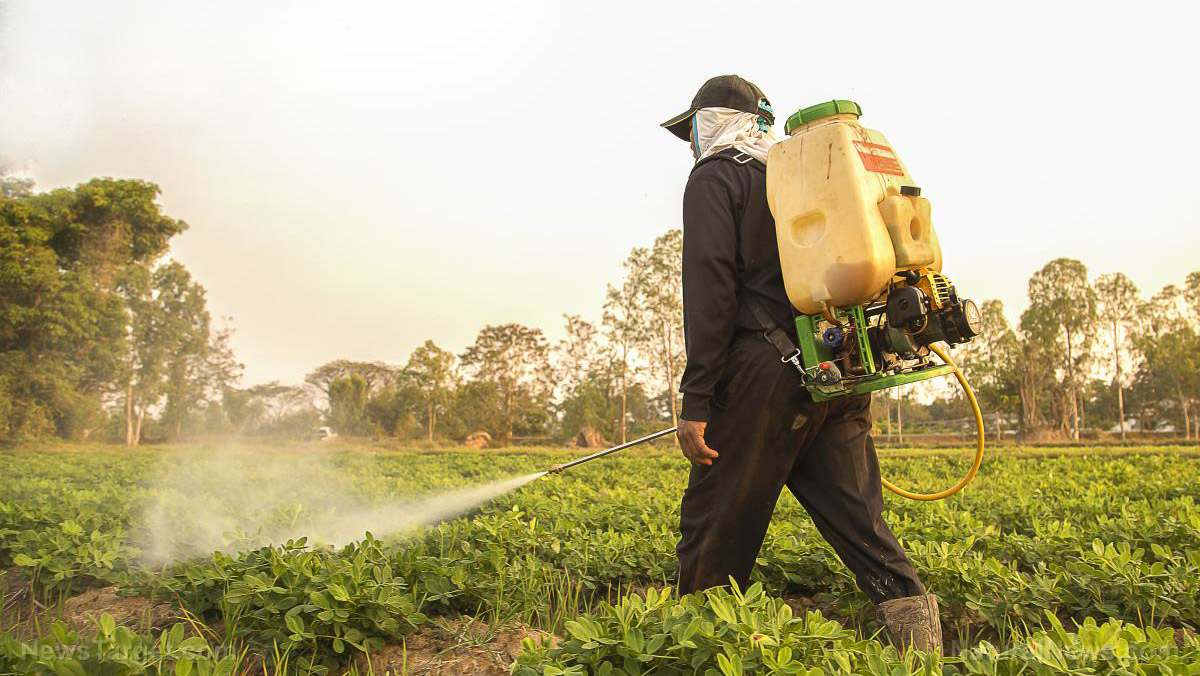Disclosed emails prove that SCIENCE has been totally corrupted by Monsanto, and regulators have become prostitutes and shills for GMOs
08/06/2017 / By Ethan Huff

A new batch of internal company documents has been released showing that agricultural giant Monsanto suppressed key data about the potential dangers of its Roundup (glyphosate) herbicide. These documents also suggest that the multinational chemical corporation worked with United States regulators to make Roundup appear safer than it is in order to gain regulatory approval.
More than 75 documents have been made public revealing discussions, text messages, and other communications between Monsanto executives and various academics and scientists about its products. Some of these documents show that Monsanto employees offered cash payments to scientists in exchange for their stamp of approval.
The documents have been made public as part of a lawsuit filed against Monsanto by individuals who say that exposure to Roundup caused themselves or their family members to fall ill with serious health conditions. Among these is non-Hodgkin lymphoma, a type of blood cancer that’s increased in prevalence alongside increased use of Roundup.
Attorneys at the firm Baum Hedlund Aristei Goldman, which is just one of many firms representing the thousands of plaintiffs who are pursuing claims against Monsanto, posted the documents, which collectively account for more than 700 pages of information. Upwards of 100 of these lawsuits have reportedly been consolidated in multi-district litigation in the federal court of San Francisco, while others are pending in places like Missouri (Monsanto’s home state), Delaware, and Arizona.
“This is a look behind the curtain,” stated Brent Wisner, one of the Baum Hedlund attorneys representing the case.
“These show that Monsanto has deliberately been stopping studies that look bad for them, ghostwriting literature and engaging in a whole host of corporate malfeasance. They (Monsanto) have been telling everybody that these products are safe because regulators have said they are safe, but it turns out that Monsanto has been in bed with U.S. regulators while misleading European regulators.”
Millions of people are threatened by Roundup, attorneys suggest
As published by U.S. Right to Know (USRTK), the documents cover a broad range of topics relevant to public health and Monsanto’s relationship with U.S. regulators. They include evidence of Monsanto’s involvement in:
• Thwarting honest scientific research
• Ghostwriting studies as if they came from doctors or scientists
• Conspiring to have Gilles-Eric Seralini’s study showing that glyphosate causes cancer retracted
• Attempting to buy off journal editors to publish studies that support its agenda
• Covering up data showing that Roundup is extremely harmful to health
• Preemptively issuing criticism against the World Health Organization’s International Agency for Research on Cancer (IARC) for declaring glyphosate to be a probable human carcinogen
• Admitting internally that there is no way to deny the carcinogenic effects of glyphosate
• Keeping at bay evidence that Roundup contains cancer-causing formaldehyde
• Withholding evidence that glyphosate absorbs easily in the gastrointestinal tract
Having these documents available publicly is important for reevaluating the safety of this prolific crop chemical. Regulators simply can’t protect public and environmental health without having access to all of the information there is to know about a given product – and in this case, there’s plenty of it pertaining to Roundup that’s never before been seen.
The information contained in these documents is so damning that it’s already prompted an investigation by the U.S. Environmental Protection Agency (EPA)’s Office of Inspector General into possible collusion between Monsanto and the EPA. In Europe, regulators are one step ahead as they considering banning glyphosate altogether.
“Monsanto has made billions of dollars a year for decades from its glyphosate-based herbicides, and they are the linchpin to billions of dollars more it makes each year from the genetically engineered glyphosate-tolerant crops it markets,” writes Carey Gillam for The Huffington Post. “The company is currently moving toward a planned merger with Bayer AG.”
Sources for this article include:
Tagged Under:



















